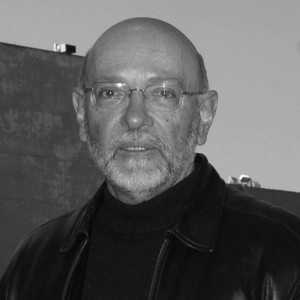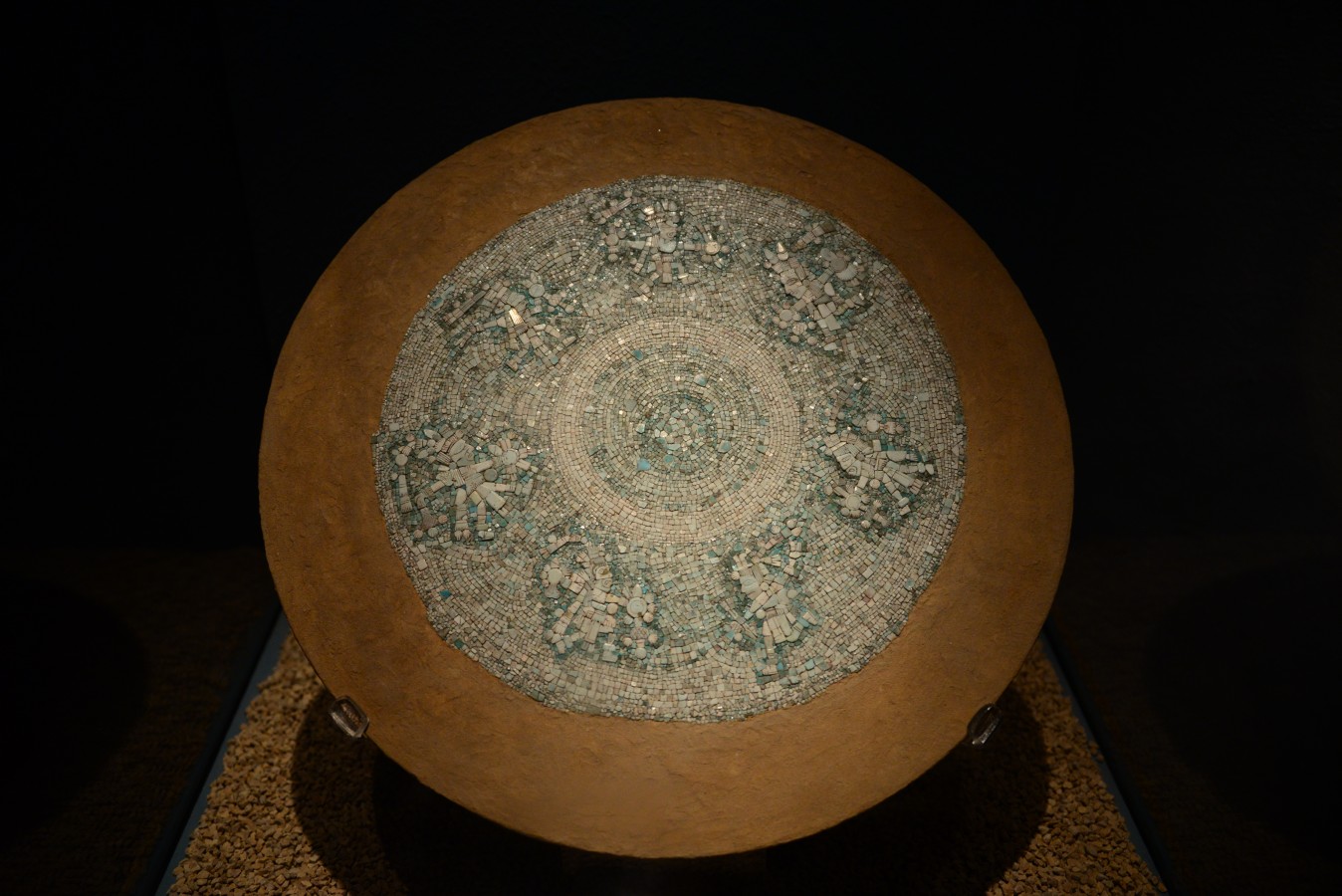The Templo Mayor site museum houses the results of excavations carried out on the most important religious building of the Mexica people. Since it was first opened, its eight galleries have been divided into two main sections, in imitation of the dualistic worldview reflected in the two shrines that crowned the Mexica temple itself. The galleries on the south side correspond to Huitzilopochtli, god of war, while those to the north are centered on Tlaloc, god of rain and sustenance. Like Templo Mayor itself, the museum faces west.
Huitzilopochtli: War and Death
The first indication that we are heading into the shrine to the war god is found in the museum’s entrance lobby: a wall of skulls rises up, with rows of stone craniums, one after the other, stretching the limits of our imagination. Mostly found on the south side of the Templo Mayor, these perhaps formed part of a rack of skulls, an altar known as a tzompantli.
The first gallery orients visitors on the long history of archeological discoveries about the Mexica, from the discovery of the two monolithic stones—Coatlicue and the Sun Stone—until more recent findings thanks to the work of the Urban Archeology Program. Exhibits include three ritual “deposits,” better known as offerings. Most of the artefacts on display in the museum originally formed part of these offerings that constituted the Mexicas’ most treasured possessions, including green stone beads, masks, human remains, vessels, as well as a strong presence of flora and fauna, all left in the Templo Mayor in order to communicate with their gods.
Death is the subject of the second gallery, where we find the oldest objects relating to the second stage of Templo Mayor (1390 AD), and unsurprisingly they are connected to death: on display are funerary urns discovered inside Huitzilopochtli’s shrine. The first is made of travertine stone with an unusual obsidian lid. This contained burnt bones, two pieces of green stone and a gold rattle. Nearby, a discovery was made of another small urn, made completely out of obsidian, a material that is difficult to carve, and great experience is required when creating such objects. As in the case of the other urn, this one also held burnt bones that must have belonged to someone from the highest social rank.
The route through the museum galleries shows us the Mexicas’ area of influence during their greatest territorial expansion; they were a people who came to dominate central Mexico—only a handful of areas escaped their rule. Toward the south, they also exercised power in the modern-day states of Morelos and part of Guerrero. From these areas they acquired fruit, cotton and other important products. The Mexicas’ sphere of control even extended to part of Oaxaca’s Mixteca region, the Gulf Coast, and they were already in the advanced stages of preparation for an incursion into the Maya region. Michoacán was one area they never succeeded in bringing under their yoke, and they suffered major defeats there.
Many artefacts have been left to us by the Mexica in the Templo Mayor, most significantly the stone masks that were placed on the mortuary bundle. The masks in different offerings come from different regions, though most frequently from the area of Mezcala, in the state of Guerrero. These have been the subject of interesting studies. One of the most outstanding Mexica masks is made in travertine, with the stone’s white color giving it a unique appearance; it makes a very striking impression with its shell inlays and red pyrite used for the eyes. The teeth, also made out of shell, were found incomplete although we still have parts of them.
The Mexica were able to control other groups by waging wars. The two major military orders, the “eagle” and “jaguar” warriors, consisted solely of members of the nobility. They could receive distinctions, own land, and dress according to their military rank. War would allow any individual, even if he was a macehual—from the working class—to enjoy social mobility and rise up the social hierarchy, although never attaining the level of nobility. This is significant because of the grandeur of the “eagle” warrior sculpture standing proudly in front of us in the site that bears the same name, on the north side of Templo Mayor; this exquisite ceramic figure is the maximum expression of Mexica power.
Tlaloc: Water and Life
Entering the part of the building devoted to Tlaloc we leave behind the world of war and are welcomed by the god of water, rain and fertility. Yet this god also had his dark side: he could also send down hail, ice-storms, and other weather that damaged crops. He needed to be appeased and hence the entire northern side of the Templo Mayor was devoted to him.
He has an unmistakable face: his goggle eyes are, like the nose, made of snakes. This is how he receives us into the gallery, with his forked tongue barely emerging beneath the mouth, and two protruding fangs. The representation is striking because, apart from revealing the typical features of this deity, he is shown as part of a blue vessel that is immediately connected to the function of the god. This is the pot or vessel used to pour water onto the earth. It was highly symbolic as a kind of uterus containing water—amniotic fluid—where life is created. By contrast, the pot could also contain the dead, who thus return to their mother’s womb. One of the offerings that contained most elements dedicated to Tlaloc was number 41. It was located beneath the platform of the stage IV-b (circa 1470), and was found very close to the altar of the frogs, beside the water god.
In this gallery visitors can admire a truly extraordinary work: the stone shell. Whoever created this sculpture not only created life through form but also joined volume and rhythm with lines that gently spread out in a pulsating, constant and eternal movement. In its infinite beauty the conch shell evokes water, rain, fertility, indeed everything that forms part of life.
Moving on through the exhibition, the grandeur of the Mexica people can be seen as we observe the sheer profusion and variety of fauna found as part of the offerings made at the Templo Mayor. Specimens come from Mexico’s highland, tropical and coastal regions, as well as from the sea itself. The various animals left in these offerings display a symbolism that is essential to consider if we are to understand their meaning in context. Animals are not just a part of the offerings but they are notably also represented in stone and clay, alongside the remains of flora, which is inherently harder to preserve. The eagle head sculpted in stone still retains some of its original coloring and stands out for its realism and the quality of its carving. It was found inside the Red Temple, located toward the south, and the bird of prey has locks of hair hanging down from its head, thus linking it in some way to war.
Music also played an important role in rituals, from birth to death. Many musical instruments, both real and sculpted, were found in the offerings: flutes, rattles, small drums, teponaztli slit drums, conch shells, and others all point to the importance of music in the daily lives of the Mexica.
Continuing the museum tour, at the entrance of chamber II a polychrome pot was found representing Chalchiuhtlicue, wife of Tlaloc, surrounded by sea shells. The goddess’s face and feet are depicted in relief on the pot, as is the folded paper adornment behind her head. She is shown wearing a shawl-like quechquémitl. The piece also features two superimposed circles on the chest, possibly indicating breasts.
On the topic of gods and animals related to water and fertility, we must also mention the god Xipe-Totec and his relation to the rites of the regeneration of life. Here Xipe is shown wearing another skin, as he is customarily portrayed. The cord that attaches and stretches the flayed skin, and the mouth that converts into a double mouth at the front, is reminiscent of rituals where the priest would wear the skin of the sacrificial victim, suggesting the connection of the ceremony with fertility. The facial expression is clearly visible, and once again death is the form that gives life in the endless cycle of opposites and complements, always of such importance in pre-Hispanic Mexico.
The Conquest
The last gallery in the museum is dedicated to the Spanish conquest, an event of enormous significance. With the Europeans came two types of conquest, one military and the other ideological: the triumph of the Spaniards’ weapons over the Mexica, on August 13, 1521, was followed by a spiritual conquest.
What was the fate of the Templo Mayor? In common with the other buildings in this ceremonial complex, it was destroyed. Some of the conquistadors’ houses were erected on top of the site where the great Templo Mayor once stood. No trace was left to pinpoint the location of the Templo Mayor, leading to numerous speculations about its location. This was precisely what the conquistadores had intended: no evidence was to be left of the conquered indigenous people and all that they considered central to their universe, which they called the Navel of the World. The remains of the Templo Mayor which we have found, hundreds of years later, correspond to the most historically remote stages and as a result are the smallest constructions. This is what allowed them to survive to this day as a mute witness of that legendary, almost mythical time.
Mexico is made up of two historical strands: pre-Hispanic Mexico and colonial Mexico. One wanted to deny the existence of the other, but failed. The former Mexico is ever present and emerges out of the earth at every corner. They are the gods who refused to die...







